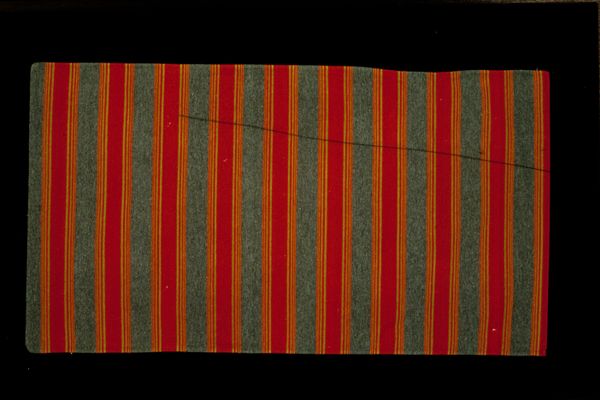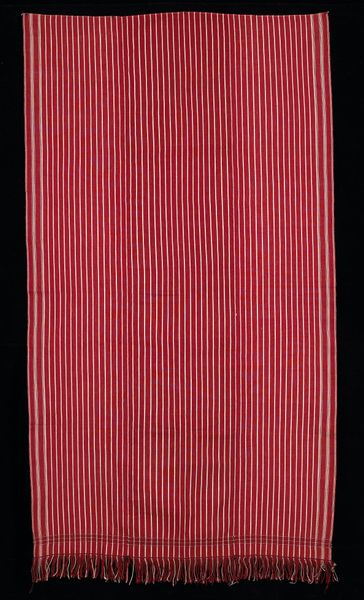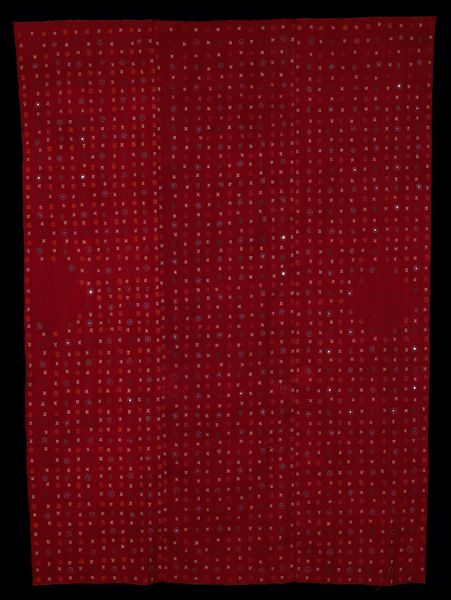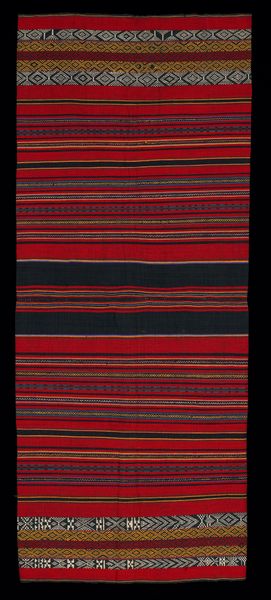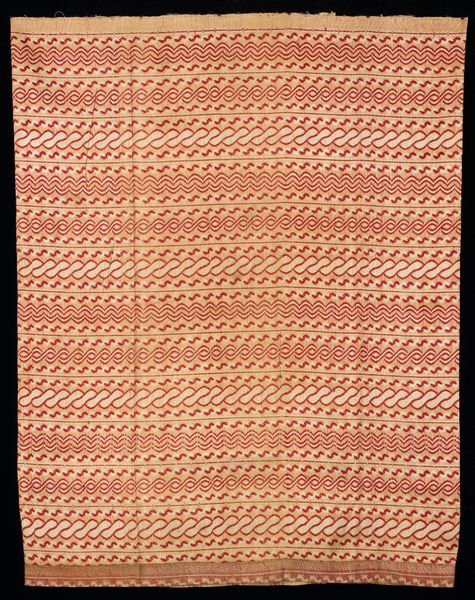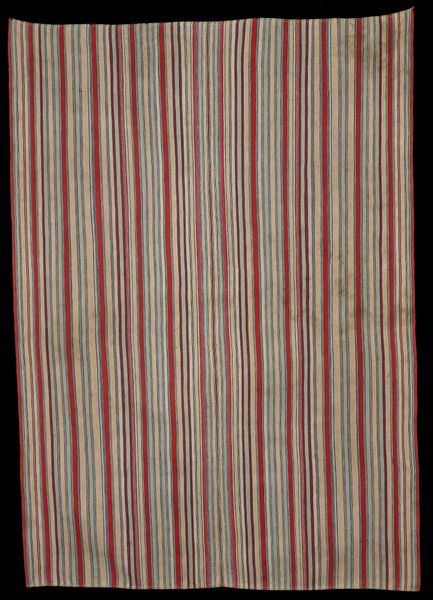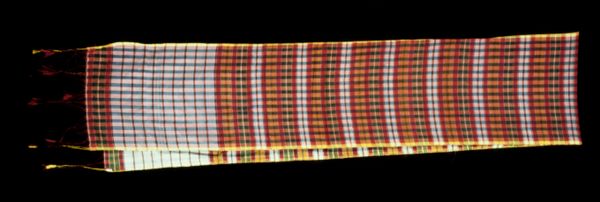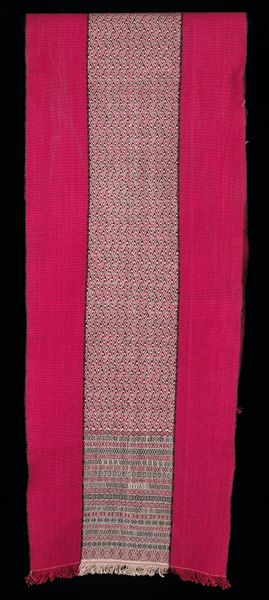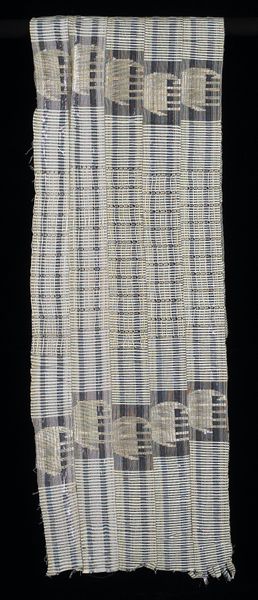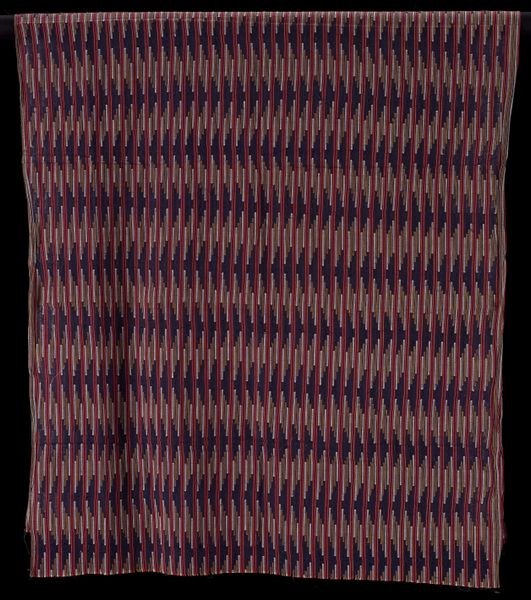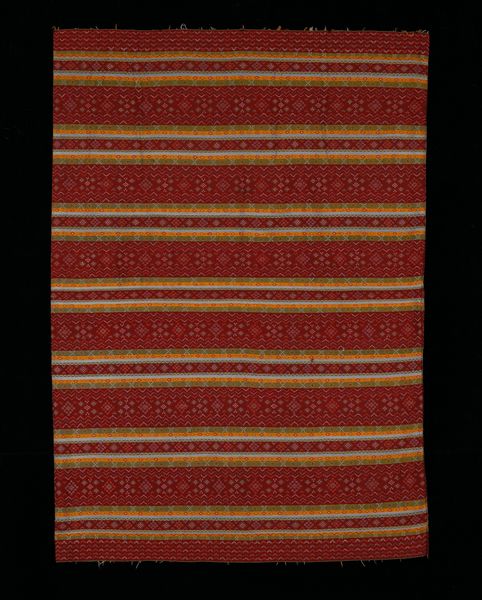
textile, cotton
#
textile
#
geometric pattern
#
geometric
#
line
#
cotton
Dimensions: 113 x 11 3/8in. (287 x 28.9cm)
Copyright: Public Domain
Curator: Here we have an intriguing textile piece titled "Man's Sash," likely crafted between 1965 and 1970. It's part of the Minneapolis Institute of Art's collection. At first glance, what does this simple red band evoke for you? Editor: Well, it hums. Does that make sense? All those horizontal lines create this low visual buzz. Almost hypnotic. And it feels incredibly…stark. Reduced. It has the feel of a minimalist flag, you know? Curator: That reduction, I think, is key. Sash-wearing cultures have imbued these kinds of objects with so much layered significance: indicators of social status, tribal identity, even spiritual protection. By distilling the sash to its barest elements – this color, simple woven lines of cotton – those older connotations still subtly resonate, don’t you think? The geometric pattern feels primordial. Editor: Totally. And that redness! Think of all the cultures that associate red with power, blood, life force... suddenly, that buzzing hum I mentioned is like an ancient electrical charge, connecting all the "men" who wore such sashes through time. Of course, "Man's Sash" feels… limited too. Is it ANY man’s sash? That’s a big idea. It sort of puts me in mind of something akin to an emblem. Curator: It makes me ponder how seemingly simple visual patterns trigger surprisingly complex cultural memories. The level of handcraft that went into making an object like this—the patient weaving, the choice of specific threads—represents not just an aesthetic decision but an act of preserving and transmitting values. Editor: You are right to remind me! There's the pure visceral engagement: The hands involved in the process, the time involved in doing such work with cotton on such a large scale. When was it made—mid-century? You’re right—the resonances extend to that labor too. I can picture somebody slowly constructing that object, adding their own signature and personality, as if coded into that striking textile pattern, that "man" we were talking about now embodied with unique personhood, and character, which might now last beyond his living lifetime. The thing is a memento mori in that sense, wouldn't you say? Curator: Precisely, which reminds us the importance of observing the details. Well, that definitely gave me a deeper perspective to ponder! Editor: I wholeheartedly concur, indeed it made me rethink and revise initial sentiments as well.
Comments
No comments
Be the first to comment and join the conversation on the ultimate creative platform.
